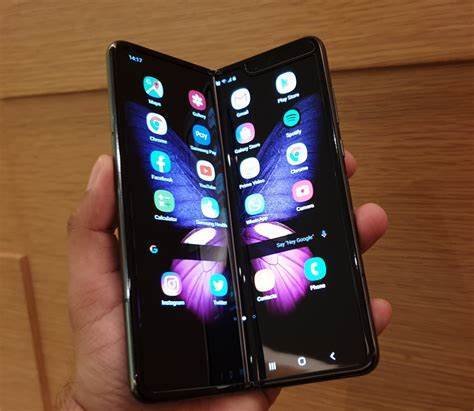Introduction: A New Era in Mobile Design
Foldable phones, once a far-off sci-fi concept, are now a tangible reality. With companies like Samsung, Huawei, Motorola, and Oppo launching flexible-screen smartphones, the mobile industry is undergoing a dramatic design evolution. The ability to fold a phone — either to make it more compact or to expand screen real estate — marks a bold shift from the traditional slab format that has dominated for over a decade. But this bold transformation raises a critical question: Are Foldable Phones a genuine leap in innovation, or just another flashy gimmick?
The Technology Behind the Fold
Foldable phones rely on advanced display technology — primarily flexible OLED panels that can bend without breaking. These are coupled with complex hinge mechanisms engineered to withstand hundreds of thousands of folds. Unlike the clamshell phones of the early 2000s, modern foldables use continuous, unbroken displays that bend smoothly and return to shape. Samsung’s Ultra Thin Glass (UTG) and Huawei’s innovative hinge designs demonstrate how much R&D has gone into perfecting this concept. Yet, even with technological breakthroughs, durability remains a common concern for early adopters.
Use Case Innovation: Does It Solve Real Problems?
One of the strongest arguments for foldable phones is the enhanced productivity and multitasking they offer. With a foldable like the Galaxy Z Fold series, users can run multiple apps simultaneously on a larger screen, transforming the phone into a tablet-like experience. This is ideal for professionals, creatives, or power users who want a hybrid device for work and play. The compact flip-style models like the Galaxy Z Flip or Motorola Razr aim at portability, offering full-size screens in a smaller footprint. But for the average user, the question remains: are these use cases compelling enough to justify the price and potential fragility?
Price vs. Practicality
The pricing of foldable phones is one of their biggest hurdles. Most foldables cost anywhere from $1000 to $2000 — significantly more than flagship smartphones with better specs in terms of cameras, battery life, and performance. While early adopters are often willing to pay a premium for the novelty and status, mainstream consumers are more price-conscious. Until foldable phones can match — or outperform — their traditional counterparts at a comparable price, their widespread adoption will be slow.
Durability and Longevity Concerns
Despite manufacturer claims of enhanced durability, foldable phones are still viewed as fragile. Issues like screen creasing, hinge malfunctions, and dust accumulation in the folding mechanism have been reported. The Galaxy Fold’s infamous launch delays in 2019 due to screen failures highlight the early challenges. Although manufacturers have since improved hinge design, screen materials, and water resistance (Samsung’s IPX8 rating is an example), skepticism remains. For consumers used to rugged and reliable phones, foldables still feel like a risk.
The Gimmick Argument: Is It Just a Trend?
Skeptics argue that foldable phones are more of a marketing gimmick than a useful innovation. Critics point out that folding does not necessarily improve performance, battery life, or camera capabilities — key features that most consumers prioritize. Instead, folding adds complexity and cost. In some cases, the hinge and fold create usability quirks, like app optimization issues, added weight, and visible screen creases. The novelty of folding may impress in a showroom, but it doesn’t always translate to daily utility.
Market Adoption and Consumer Response
The foldable market is growing, albeit slowly. According to industry reports, over 18 million foldable phones were shipped in 2023, and the numbers are expected to double in the next few years. Samsung currently dominates the space, but brands like Oppo, OnePlus, and Google are entering the foldable scene with new offerings. Consumer interest is high, especially among tech enthusiasts, influencers, and business professionals. However, for foldables to go mainstream, manufacturers need to address affordability, durability, and better software experiences.
Comparing Foldables to Other Form Factors
Foldables aren’t the only attempt at rethinking smartphones. Modular phones (like Google’s Project Ara), dual-screen devices (like Microsoft’s Surface Duo), and rollable displays have all tried to redefine the smartphone. However, most failed to gain traction due to technical limitations or lack of demand. Foldables have managed to stay relevant thanks to the backing of major brands and tangible user benefits. Compared to alternatives, foldables strike a balance between novelty and functionality — but they still sit on the experimental edge of the market.
Future of Foldables: What’s Next?
The future of foldable phones looks promising if innovation continues in the right direction. As the tech matures, prices are expected to drop, and durability should improve. Brands are exploring new designs, like tri-folds and rollable phones that can expand dynamically. Software ecosystems will evolve to better support foldable UIs, and app developers will optimize for dual-screen experiences. Eventually, foldables may not replace traditional phones but instead coexist as premium, high-functionality alternatives for a specific user segment.
Conclusion: Innovation with Room to Grow
So, are foldable phones an innovation or a gimmick? The answer lies somewhere in between. They undeniably represent a bold innovation in hardware design and user interaction. Yet, in their current state, they fall short of being essential. For now, foldables remain a niche product — a fascinating preview of what mobile technology could become. Whether they evolve into mainstream devices or fade into obscurity like other ambitious tech experiments depends on how well manufacturers can balance usability, durability, price, and purpose in the years to come.






